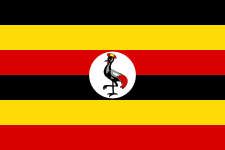Introduction
Improving health outcomes in lower-middle income countries (LMIC) has been a persistent global struggle; various non-governmental and humanitarian organizations strive to reduce the number of malnourished citizens in such countries. Our project aims to combat malnourishment in the District of Gulu, Uganda. We have paired with a team of researchers partaking in the development and maintenance of the Gulu HDSS (Health Demographic Surveillance System), and will be using their information to orchestrate GIS-based network analysis, kernel density analysis, and spatial autocorrelation. Our goal is to indicate lack of resources available within Gulu, initiate a raise in spending per capita on healthcare and road development, and lastly to reduce malnutrition rates and foster social and economic development. Time permitting, we would like to analyze access to trading sites, water sources, and market places, to build on our understanding of malnutrition and other geographic and social contributors.
Background
Between 1986- 2006 Uganda was involved in a civil war. A huge portion of the population was relocated to refugee camps. After the end of the war, these internally displaced persons (IDPs) were forced to return home to rural villages IDPs now facing issues of accessibility to healthcare (due to remote location and residual health issues from camps). Gulu-Awach HDSS was established to “provide a framework for monitoring [post-conflict] demographic and health indicators” (Schramm et al., 2016). We are using household survey and malnutrition data gathered by Gulu-HDSS to examine spatial correlation between accessibility to health centres and malnutrition (photo via Wikipedia Commons).
